October 2022
Amateur astrophotographer snaps a stunning photo of distant nebula

Monday, October 31, 2022: This stunning image of a dusty region in the Milky Way galaxy known as the Heart Nebula wasn't taken by any famous space telescope but by an amateur astrophotographer in Cairo, Egypt.
Wael Omar created this image of the nebula, which is located some 7,500 light-years away from Earth, from the roof of his house in Cairo. To overcome the city's air-pollution and light pollution, both of which obstruct the view of the cosmos, he collected 50 hours of observations over a 10-day period, which he then processed into this stunning image.
The Heart Nebula was discovered by astronomer William Herschel in 1787. Although very faint, the nebula, made of ionized hydrogen gas, is rather large, spanning an area four times the size of the full moon. The nebula is located within the famous W-shaped constellation Cassiopeia. For more of Wael' stunning images, visit his Instagram page @waelomar_astrophotography. – Tereza Pultarova
Brand new Mars crater exposes subsurface ice

Friday, October 28, 2022: A fresh new crater on Mars created by a meteoroid strike on Christmas Eve 2021 has been photographed by NASA's Mars Reconnaissance Orbiter, revealing layers of surprise subsurface ice.
The space rock impact that created the crater sent powerful shockwaves through Mars' crust that were immediately picked up by NASA's InSight lander, which monitors the planet's seismic activity.
From the strength of the shockwaves, scientists understood that the rock that triggered the earthquake must have left behind a crater. They were eventually able to find the new crater in images taken by the Mars Reconnaissance Orbiter. A 492-foot-wide (150 meters) and 70-foot-deep (21 meters) hole was gaping in the surface with material ejected by the impact scattered as far as 23 miles (37 kilometers) away.
Scientists say this was the largest crater they have ever observed to form on any body in the solar system nearly in real time. The powerful impact exposed blocks of water ice underneath the surface, which surprised scientists as the impact took place in one of the warmest areas near the red planet's equator. – Tereza Pultarova
Get the Space.com Newsletter
Breaking space news, the latest updates on rocket launches, skywatching events and more!
The highest resolution movie of the solar corona

Thursday, October 27, 2022: The Europe-led Solar Orbiter spacecraft took the highest-resolution movie ever of the upper layer of the sun's atmosphere, the corona, during its recent close approach to the sun.
The video sequence, taken with Solar Orbiter's Extreme Ultraviolet Imager (EUI), reveals the corona in a tranquil almost motionless state. The video was taken on Oct.13 when Solar Orbiter was at only 29% of the sun-Earth distance from the star. Each pixel in the movie covers an area 65 miles wide (105 kilometers), which means that 17 Earths would fit across the image.
The corona, over a million degrees Celsius hot, is a source of the solar wind and coronal mass ejections, bursts of plasma that affect space weather around Earth. To see the corona this quiet is a bit surprising as the sun's activity has been picking up lately as the sun nears the peak of its current cycle of activity which will take place in 2025. – Tereza Pultarova
Moon casts shadows over Scandinavia during solar eclipse

Wednesday, October 26, 2022: Europe's Earth-observing satellite Sentinel-3 captured the brief moment when the moon cast a vast shadow over Scandinavia in Northern Europe during the solar eclipse on Oct. 25.
The eclipse was only partial with a little over 50% of the sun's disc hidden behind the moon as viewed from Norway. Sentinel-3 flew over the area at 10:12 GMT, just as the eclipse was nearing its maximum. The satellite took the image from its orbit at the altitude of about 500 miles (800 kilometers).
Eastern parts of the Arctic and sub-Arctic regions offered even better conditions for observing the Oct. 25 eclipse. In western Siberia, particularly in the Russian city of Nizhnevertovsk, over 86% of the sun's disk was obscured during the peak of the eclipse. – Tereza Pultarova
Moon's shadow crossing Earth during solar eclipse

Tuesday, October 25, 2022: The moon's shadow skimming the face of Earth during the partial solar eclipse on October 25 in a video sequence captured by the European Meteosat weather-forecasting satellite.
The video was processed by Earth-observation scientist Simon Proud of the U.K.'s space science laboratory RAL Space.
"Look near the top of the video, especially on the right hand side: Can you see the moving dark area? That's the shadow!" Proud said in a Tweet, sharing the sequence.
Meteosat is a geostationary satellite that sits in a fixed spot relative to Earth's surface at an altitude of 22,000 miles (36,000 kilometers). From this vantage point, the satellite, built to observe the movement of cloud system above the planet, captured a complementary view to the celestial spectacle observed from Earth.
A solar eclipse occurs when the moon passes between the sun and Earth. Depending on the level of alignment between the three bodies, the eclipse can be either total or partial. The eclipse of Oct. 25 reached a maximum near the North Pole where the moon briefly covered 82% of the sun's visible disk. The eclipse was the second and final solar eclipse of 2022. The next solar eclipse will be a total one for parts of the Southern Hemisphere including Australia and will occur in April 2023. – Tereza Pultarova
Stars being born inside Pillars of Creation

Monday, October 24, 2022: The red dots in this zoomed-in segment of the James Webb Space Telescope's photo of the famous Pillars of Creation are newborn stars only a few hundred thousand years old.
The Pillars of Creation, part of the Eagle Nebula in the constellation Serpens, are one of the closest star-forming regions to Earth. The Hubble Space Telescope has imaged the spectacular clouds of cosmic dust several times since 1995, but could never penetrate the cloud's surface. The James Webb Space Telescope, with its heat-detecting infrared vision, has now revealed what is happening inside the Pillars, allowing astronomers to observe star formation in detail and on a large sample of emerging stars. – Tereza Pultarova
Veteran X-ray telescope captures powerful gamma ray burst
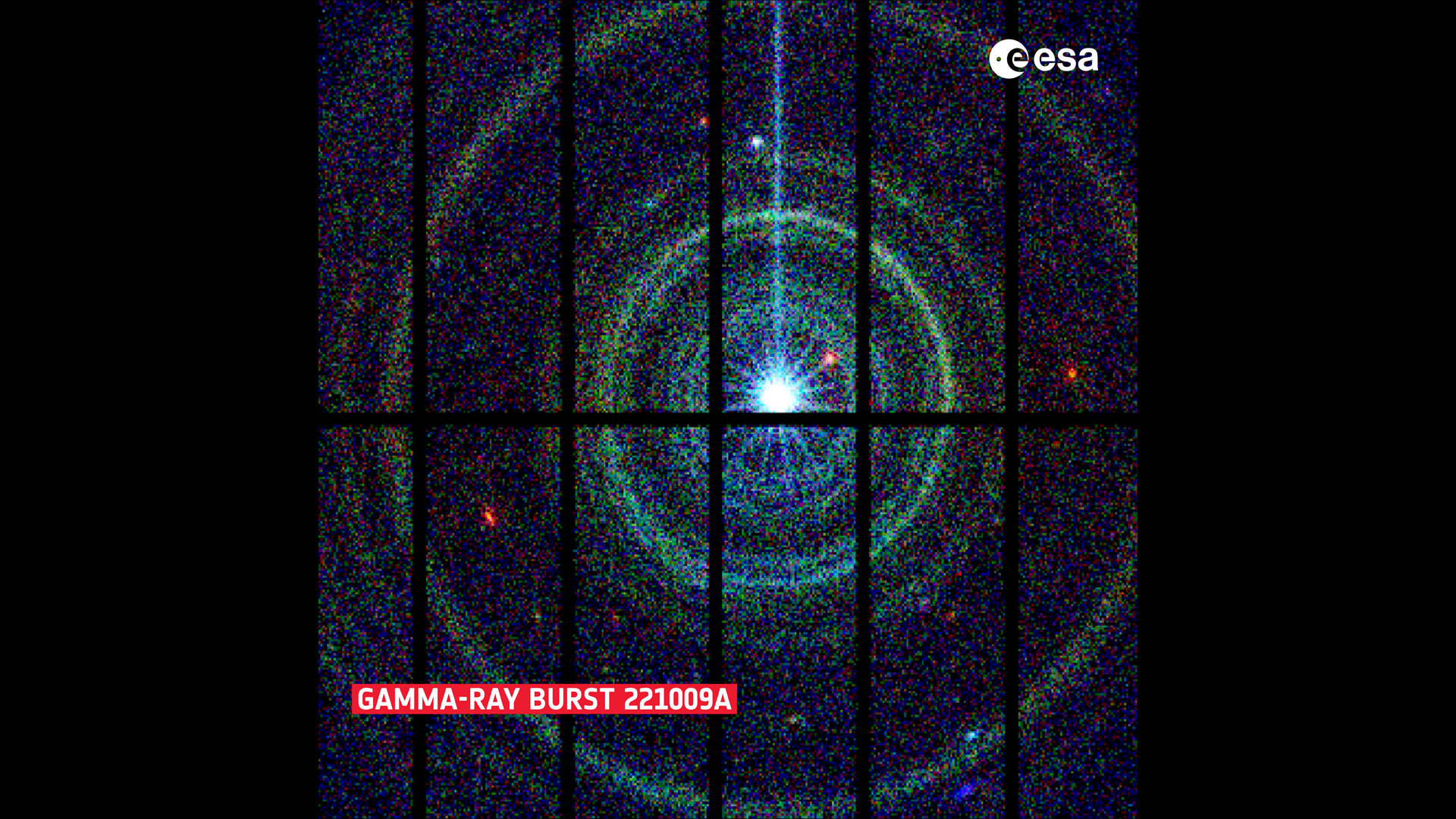
Friday, October 21, 2022: Europe's veteran XMM-Newton space telescope, which detects high energy X-ray radiation emitted by objects in the universe, observed the immediate aftermath of the gamma ray burst of the century.
According to the European Space Agency (ESA), which released the image on Friday (Oct. 21), operators pointed XMM-Newton in the direction of the constellation Sagitta, from where the gamma ray burst emerged on Sunday (Oct.9), shortly after the flash was first detected.
The telescope, launched in 1999, then took spectacular images of the energetic rays scattering off interstellar dust as they raced through our galaxy at nearly the speed of light.
Astronomers said the gamma ray burst, officially named GRB 221009A, was one of the strongest ever detected and also one of the nearest. ESA said that many of its spacecraft detected the aftermath of the event, which was so powerful that it ionized Earth's atmosphere, briefly disrupting long wave radio communication on Earth. – Tereza Pultarova
Hubble catches a galaxy cannibalizing another

Thursday, October 20, 2022: The Hubble Space Telescope captured an image of two strangely interacting galaxies, one of which appears to be sucking out stars from the other.
The two galaxies in question are NGC 2799 (on the left), which is being stretched by the gravitational pull of the larger NGC 2798 galaxy (on the right).
A thin bridge of stars is visible in the image leading from the smaller galaxy to the heart of the larger one.
These two galaxies will likely merge completely in the future, the European Space Agency said in a statement. But this process is likely going to take hundreds of millions of years. Although the idea of a galactic collision sounds intimidating, stars in both galaxies usually survive such encounters as the vast amount of free space between the balls of matter ensures that they safely avoid each other during the process. – Tereza Pultarova
The James Webb Space Telescope re-images Hubble's iconic Pillars of Creation

Wednesday, October 19, 2022: NASA's James Webb Space Telescope has taken a look at the Pillars of Creation, an object of one of the most iconic images of its predecessor Hubble.
Using its infrared super-vision, Webb peered deeper into the nebula than Hubble ever could, revealing stars being born inside the dense clouds of gas and dust that form the spectacular columns that are part of the Eagle Nebula located in the constellation Serpens some 7,000 light years from Earth.
The image, taken by Webb's Near-Infrared Camera (NIRCam) is virtually sprinkled with sparkles of various sizes and luminosity levels, many of which are nascent stars just springing into life out of the coalescing dust in the Pillar's clouds. – Tereza Pultarova
Martian pebbles photographed by NASA's Perseverance rover

Tuesday, October 18, 2022: NASA's Perseverance rover took an up-close view of Jezero Crater surface covered with sand and regularly shaped pebbles.
The rover took the image using its SHERLOC WATSON camera located at the end of its robotic arm on Sunday, Oct.16, its 589th sol on the red planet. The rover has recently experienced technical problems when collecting its 14th rock sample. The rover was able to collect drill the promising rock, but failed to seal the test tube. The samples the rover collects will be brought to Earth by a return mission in the early 2030s. – Tereza Pultarova
Cosmic dust set aflame by the most powerful explosion ever observed
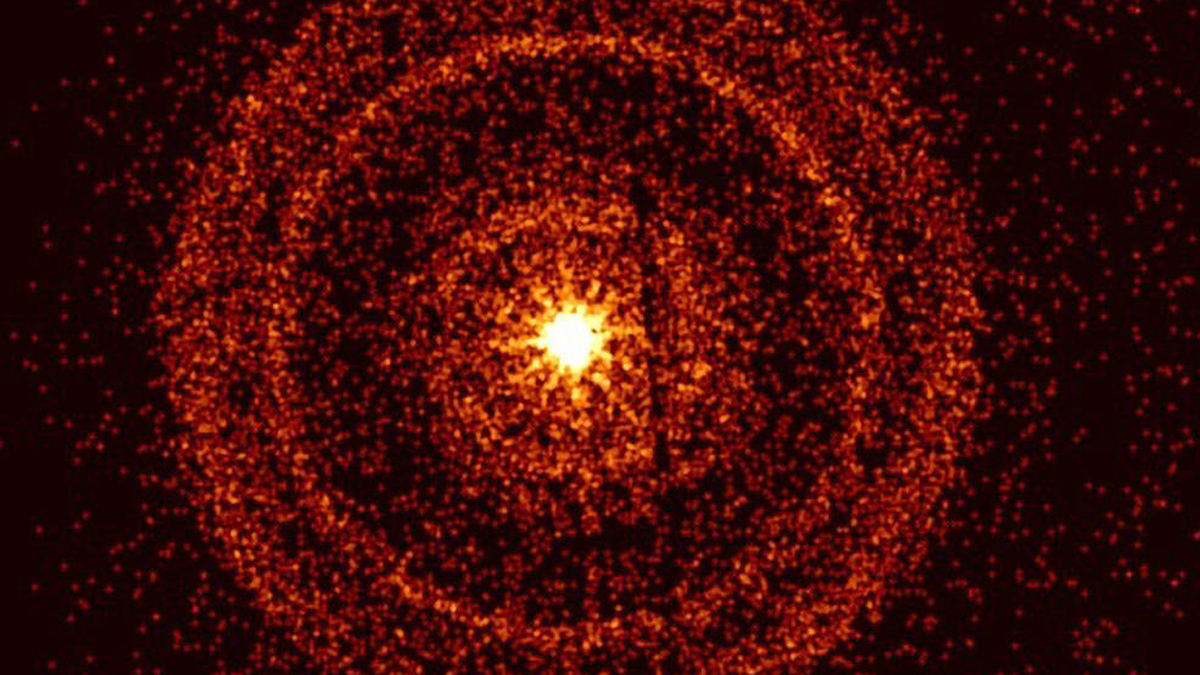
Monday, October 17, 2022: Rings of cosmic dust set alight by extremely energetic radiation from a record-breaking gamma ray burst glow in this image captured by NASA's Swift X-ray telescope.
The gamma ray burst GRB 221009A flashed from a galaxy over 2 billion light-years away on Oct. 9 in what has been the most energetic such event ever observed. Gamma ray bursts are the most energetic explosions known to occur in the universe, second only to the Big Bang. They are believed to be a result of supernova explosions of dying supermassive stars. Just as the star collapses into a new-born black hole, it unleashes a beam of light that brightens up the universe for a brief period of time of a few seconds to a couple of minutes.
Telescopes all over the world are now aiming at spot in the sky were GRB 221009A came from, hoping to gather enough data to shed more light on these formidable explosions. – Tereza Pultarova
Crew-4 leaves International Space Station

Friday, October 14, 2022: Four astronauts of the International Space Station's Crew-4 have left the orbital outpost today in a SpaceX Dragon capsule named Freedom.
The capsule undocked from the space station at 12:05 p.m. EDT (1605 GMT). On board were NASA astronauts Bob Hines, Kjell Lindgren and Jessica Watkins and the European Space Agency's Samantha Cristoforetti, who spent five and a half months in space. Their departure was twice delayed because of bad weather in Florida. The capsule will splashed down near Jacksonville, Florida, on Saturday (Oct. 15), NASA officials said.
The quartet of astronauts was replaced by Crew-5 who arrived on Oct.6. -- Tereza Pultarova
Mars orbiter takes a stunning shot of Martian moon with Jupiter

Thursday, October 13, 2022: The European Mars Express spacecraft took a stunning sequence of images capturing the Martian moon Deimos with Jupiter and its four main moons.
The High Resolution Stereo Camera aboard the spacecraft captured the sequence consisting of 80 images in February, but the European Space Agency, which operates the spacecraft, only released it on Oct. 13.
The rugged Martian moon Deimos crosses the spacecraft's view in the sequence with Jovian moons Europe, Ganymede, the gas giant planet Jupiter, and the moons Io and Callisto aligned in the background from left to right.
Mars Express was 460 million miles (745 million kilometers) away from Jupiter when it took the images. – Tereza Pultarova
Solar Orbiter speeds toward the sun
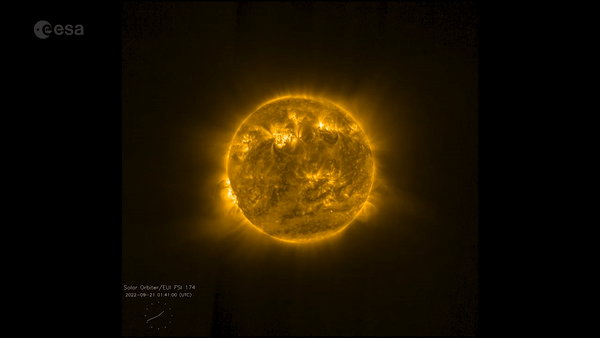
Wednesday, October 12, 2022: The Europe-led Solar Orbiter spacecraft captured this video sequence with one of its high-res cameras as it sped toward the star at the center of our solar system ahead of its close approach, the perihelion, on Oct.12.
The sequence shows the sun's surface sparkling with activity in its gaseous atmosphere as it evolved between Sept. 20 and Oct. 10. Solar Orbiter makes regular close passes at the sun at about one third of the sun-Earth distance (within the orbit of the planet Mercury). Only NASA's Parker Solar Probe has ever dared closer to the star, but that spacecraft doesn't carry a sun-facing camera, as its optics wouldn't survive in the hellish environment the probe encounters.
Together, these two spacecraft make leaps in our understanding of the behavior of our life-giving star. – Tereza Pultarova
Robots help with experiments on International Space Station
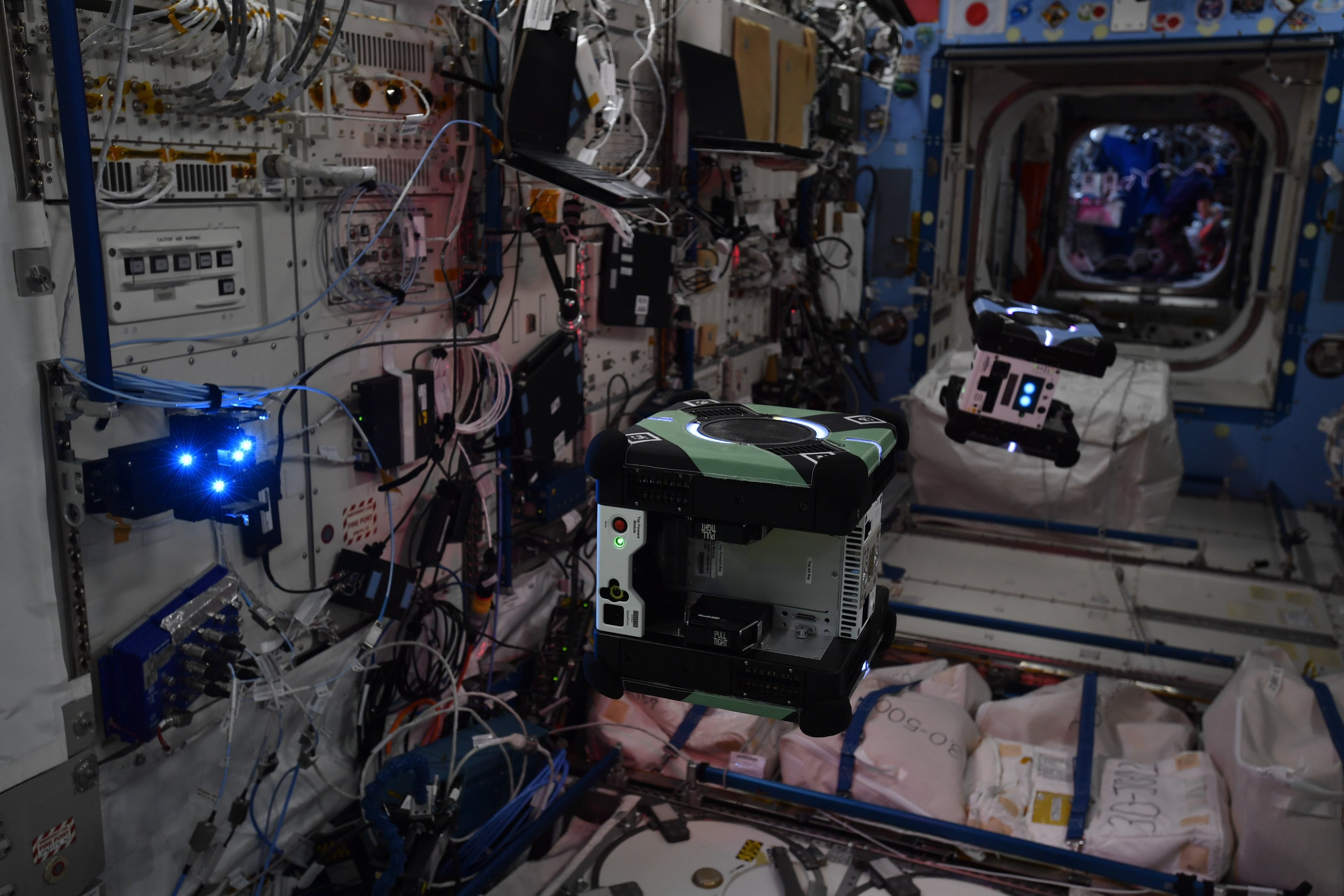
Tuesday, October 11, 2022: NASA's Astrobee robots are assisting astronauts in conducting experiments aboard the International Space Station.
The Astrobee robots are free-flying robots developed to help astronauts with routine tasks so that the humans can spend more time doing the fun stuff. According to NASA, the cube-shaped robots can take inventories and document experiments using their built-in cameras or even move cargo through the space station.
In this image, shared on Twitter by European astronaut Samantha Cristoforetti, the Astrobees are helping to test software designed to optimize spacecraft docking and undocking. – Tereza Pultarova
Webb captured the birth of a distant solar system

Monday, October 10, 2022: The James Webb Space Telescope captured the birth of a distant solar system in a famous star-birthing nebula.
The small U.F.O-like speck in the middle of the image is a young star, only about 1 million years old, surrounded by a protoplanetary disk from which planets are expected to spring to life. The cloud of dust and gas from which the star emerged is the famous Orion Nebula, a well-known star-forming region some 1,344 light years away from Earth located in the constellation Orion.
The James Webb Space Telescope, with its infrared super-vision can peek through the clouds of gas and dust right into the heart of such star-forming regions. – Tereza Pultarova
Europa gets a psychedelic treatment in a new image from Juno's close flyby
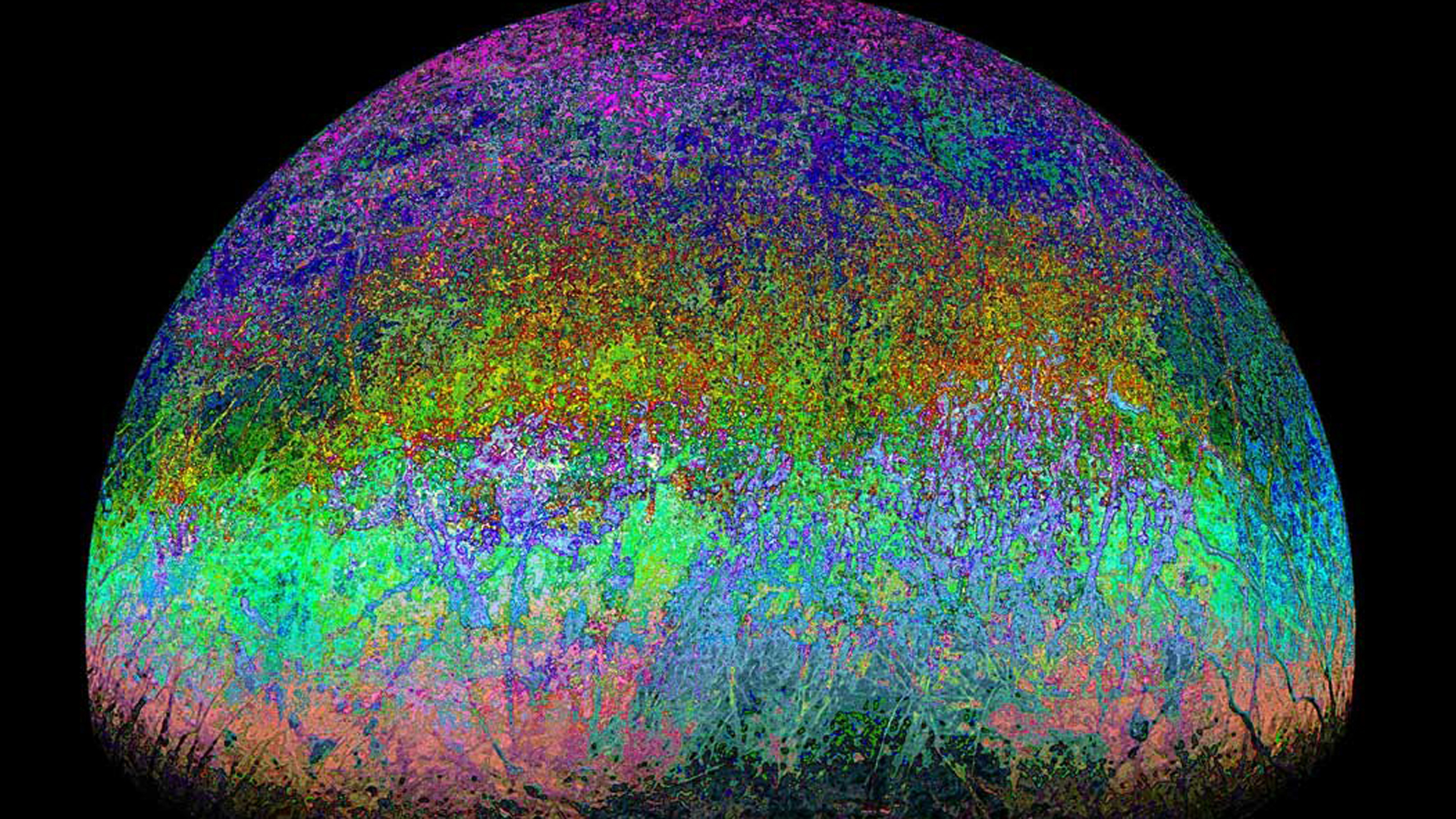
Friday, October 7, 2022: An image of Jupiter's ocean-bearing moon Europa taken during a recent flyby by NASA's Juno probe received a psychedelic treatment revealing the mysterious world in unexpected colors.
The picture was taken by Juno's JunoCam camera during the pass on Sept. 29 and was processed by citizen scientist Fernando Garcia Navarro. Navarro's unorthodox treatment lent the rather plain white and brownish moon a psychedelic look, creating a bridge between science and art. – Tereza Pultarova
Europe's delayed Ariane 6 rocket completes upper stage test
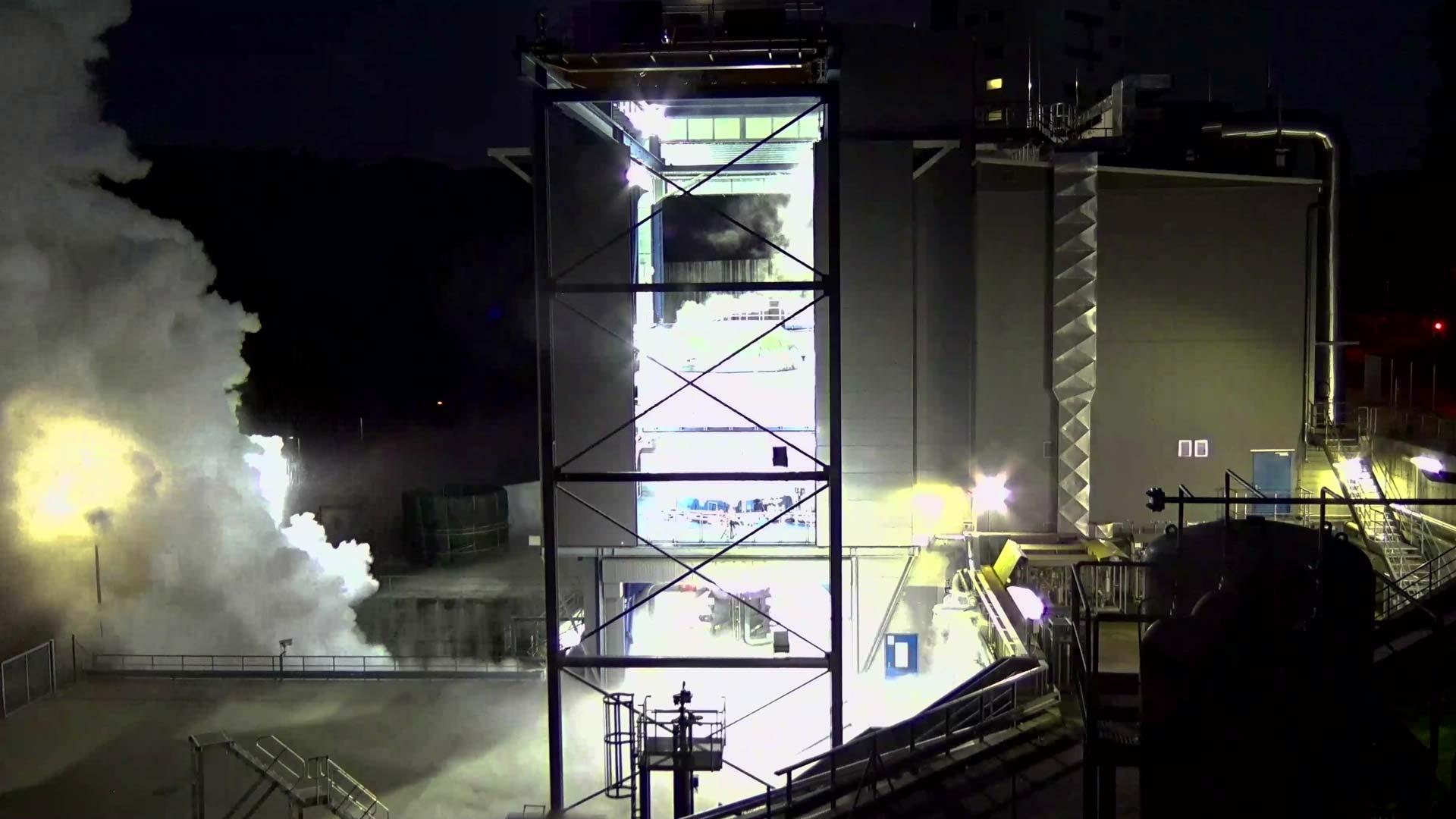
Thursday, October 6, 2022: The European rocket-maker ArianeGroup has successfully tested the upper stage of its new, delayed, heavy-lift rocket Ariane 6.
The upper-stage, which can be repeatedly ignited, completed its first hot-fire test at a rocket research laboratory in Lampoldshausen, Germany, on Wednesday (Oct. 5). During the test, engineers simulated conditions the stage will experience in flight. The upper stage, responsible for injecting customer payloads into correct orbits, is the part of the rocket that operates for the longest time. Further tests have to be performed before the rocket can get a green light for its debut flight, which was originally scheduled for 2020. – Tereza Pultarova
Falcon 9 clears launch pad with Crew-5 atop

Wednesday, October 5, 2022: SpaceX's Falcon 9 rocket with the Dragon Crew Endurance capsule atop is clearing the launch pad in this photo taken during Crew-5's launch to the International Space Station.
The rocket lifted off from Launch Complex 39 A at the Kennedy Space Center in Florida at 12:00pm EDT (1600 GMT) on Wednesday (Oct. 5). The capsule will take NASA astronauts John Cassada and Nicole Mann, Japan's Koichi Wakata and Roscosmos' cosmonaut Anna Kikina to the International Space Station. Kikina is the first Russian to fly to the International Space Station aboard the Dragon spacecraft. The capsule is expected to dock at the orbital outpost on Thursday (Oct. 6) at 4:57pm EDT (20:57 GMT). – Tereza Pultarova
Crew 5 prepares for launch to space station

Tuesday, October 4, 2022: Two NASA astronauts, a Japanese space farer and a Russian cosmonaut have practiced for their launch to the International Space Station today in a final dress rehearsal test.
The quartet makes up Crew 5, which will travel to the orbital outpost tomorrow aboard a SpaceX Dragon Crew capsule. NASA's John Cassada and Nicole Mann will be joined by Koichi Wakata of Japan's Aerospace Exploration Agency and Roscosmos' cosmonaut Anna Kikina. Kikina is the first Russian to fly to the International Space Station aboard the Dragon spacecraft. The launch comes a day after reports of a Russian nuclear convoy seen heading toward the borders of the invaded Ukraine appeared in the news. The launch is scheduled to take place on Wednesday, Oct. 5, at 12:00 p.m. EDT from Launch Complex 39 A at the Kennedy Space Center. – Tereza Pultarova
DART's death witness LICIACube snaps a photo of Earth with the moon

Monday, October 3, 2022: The tiny cubesat that traveled with NASA's DART mission to the Didymos binary asteroid system to witness DART's collision with the rock snapped a picture of Earth and the moon.
The picture, released by the LICIACube team on Twitter on Sunday (Oct. 2), was taken just before DART smashed into the asteroid Dimorphos on Monday (Sept. 26).
LICIACube's purpose was to witness DART's encounter with the 525-foot-wide (160 meters) asteroid moonlet Dimorphos and inspect the aftermath of the experiment, which marked the first ever attempt to alter the orbit of a celestial body. Dimorphos orbits a larger, 2,560-foot-wide (780 m) rock called Didymos, and it was the orbit of the moonlet around the parent asteroid that the DART mission intended to change. Astronomers are now observing the system to determine whether DART succeeded. The technique might one day be used to deflect a stray rock on a collision course with Earth. – Tereza Pultarova
Can't find the date you're looking for? It may have been a weekend or holiday, when we don't normally update our Image of the Day.
Click 'NEXT PAGE' below for November >
Join our Space Forums to keep talking space on the latest missions, night sky and more! And if you have a news tip, correction or comment, let us know at: community@space.com.

Space.com is the premier source of space exploration, innovation and astronomy news, chronicling (and celebrating) humanity's ongoing expansion across the final frontier. Originally founded in 1999, Space.com is, and always has been, the passion of writers and editors who are space fans and also trained journalists. Our current news team consists of Editor-in-Chief Tariq Malik; Editor Hanneke Weitering, Senior Space Writer Mike Wall; Senior Writer Meghan Bartels; Senior Writer Chelsea Gohd, Senior Writer Tereza Pultarova and Staff Writer Alexander Cox, focusing on e-commerce. Senior Producer Steve Spaleta oversees our space videos, with Diana Whitcroft as our Social Media Editor.
